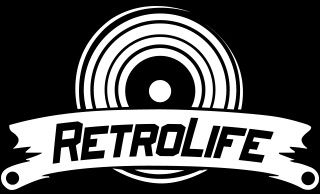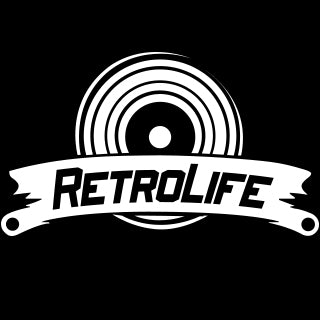Whether you’re a longtime vinyl enthusiast or new to collecting LPs, it can be difficult to determine how much a record is worth. You may be staring at Bleach from Nirvana, or a record from Frank Wilson or Elvis Presley, without any idea what it actually might be worth.
Plenty of factors can come into play when you’re appraising the value of vinyl records, including age, rarity, condition, and more. It’s often tough to know where an LP in your collection ranks in these categories. That’s where we come in.
In this post, we’ll walk you through the basic steps you can take to determine the value of a vinyl record. We’ll cover everything from tips for at-home appraisals to what to do when you can’t figure out a record’s value on your own.
How To Appraise a Record at Home
If you’re planning on trying to determine the worth of one of your records on your own, don’t let the task intimidate you – figuring out a record’s monetary value isn’t always as hard as it sounds.
First off, a soul or rock record is likely to be more valuable from the get-go than a spoken word record. Then, records by famous artists are also likely to be worth more, although this depends on rarity. That said, the value of records from certain artists may drop off after the end of their careers, although this isn’t true in the case of artists like Robert Johnson or The Beatles (just consider the infamous White Album).
Ultimately, there are four key factors to consider: how rare the record is, what condition it’s in, how old it is, and the current price of similar copies. In the sections below, we’ll walk you through all of these factors to help you get a sense of how to evaluate the albums in your collection.
1. What Condition Is Your Record In?
Once you choose a record to appraise, the first step to take is determining its condition. Obviously, a record in mint condition has a higher value than a damaged one. In this step of the appraisal process, look at the following attributes:
- Warping: Is your record warped? If so, its sound quality and physical integrity may be compromised. Warping can be caused by improper storage methods, extreme temperatures, and other factors, and it’s one of the main reasons some rare records sell for less than others.
A warped record often produces inferior sound due to the physical shifting of the vinyl, which means a collector won’t be willing to pay as much for it. Rare records with slight warping issues may still sell for large sums, but it’s best to take warping on a case-by-case basis.
- Scratches: If your record has deep scratches on either of its sides, you’re likely to deal with sound issues like skipping, noise, and distortion. These issues can take away from the resale value of an album, and they’re common problems in records that are stored improperly.
Some scratches are deeper than others, making them tough – or impossible – to buff out. Milder scratches, however, can sometimes be remedied using DIY methods.
- Cracks: If an album is cracked, it’s safe to assume it’s been rendered completely unplayable. That’s a tragedy for any record, especially rarer LPs that would otherwise be worth hundreds of dollars. In most cases, a cracked vinyl record won’t sell for much, but some vinyl collectors are open to purchasing them if the jacket and any collectible inserts are still included and intact.
- Missing Inserts/Jacket: A record is worth more if every part of its original packaging comes along with it. If your record is missing its jacket, picture sleeve, or any collectible inserts that came with it, its resale value is likely to take a major dip. Take stock of any labels and picture sleeves to see what’s there and what’s not.
However, a loose vinyl record may still be worth some money. The best way to determine whether you’ll profit from selling an album without a jacket is to look online for other copies that are for sale.
How Rare Is Your Record?
In many cases, the records that can be sold for the most money are the ones that were produced in extremely limited qualities. Something like God Save the Queen from the Sex Pistols is rare, so it would go for a high value. Similarly, an album with the original picture sleeve of “Street Fighting Man” by the Rolling Stones would be valued highly as well since they withdrew it before release.
Some collectors go after specific pressings or issues of an album that were only produced during a specific time period, then discontinued by the record company. While you might be able to find a more recent pressing of the same record, the older, discontinued pressing is likely to be worth more in the eyes of a collector. The rarity of an album can differ based on whether you’re looking at 45s or 78s as well.
Rare pressings of classic albums are sometimes worth hundreds – or even thousands – of dollars when resold. These pressings might be rare monophonic copies of albums later only released in the stereo version, albums with special limited edition jackets or inserts, foreign editions, or autographed records. You may also find that picture discs have a higher value and that the vinyl color can impact its price. The rarer an album is, the more it’s likely worth in the vinyl resale market.
Sometimes, it can be very difficult to figure out how many copies of a certain album were issued on your own. This information isn’t always readily available on the internet, especially in the case of older albums that were produced in very limited quantities, so there’s no one record price guide that you can look at. If you’re unsure about the rarity of an album in your collection, it’s best to contact an expert.
How Old Is Your Record?
Determining the age of a vinyl record is often one of the easiest steps in the appraisal process. Most LPs come with release information printed somewhere on the jacket. In addition, all records released after the mid-1970s were paired with a serial number that can still be used to access information about a specific release.
However, it can be tougher to figure out exactly what year the specific pressing of an album was released, especially if that particular album was issued pre-1973. On top of that, a record from the 1950s or early 1960s will often be worth more than one from the 70s or 80s.
If you suspect that a record in your collection is very old, one of the best ways to get an accurate appraisal is to contact an antique expert. Pros in the antique world are experts at looking for clues to determine exactly what year an item was manufactured – including records. You’re likely to find a resource like this at your local flea market or antique store.
How To Resell Old Records
Once you’ve determined how much one of your records is worth, it’s time to work on reselling it to make the most profit possible. There are a few different routes you can take when selling records, including:
Online: Selling records using an online marketplace has its pros and cons. It’s likely to expose you to the most potential buyers, but you’ll need to safely and carefully ship your record out once it’s been purchased. Whether you choose eBay or a more specific record site, this is a great place to at least start your research.
Locally: If you’re planning on selling a large number of rare records and don’t want to ship them out to buyers around the world, you might want to have a local sale. That way, you can attract buyers and collectors from near where you live without having to worry about shipping and posting your collection online.
Ultimately, it’s up to you to choose the direction you want to go when selling pieces of your record collection. Just make sure you don’t part with any albums that you’ll miss!
——MUST KNOW——
(Combining these explanations to see the table will be clearer)
- Collection level VS listening level: both can be played perfectly, only the degree of damage to the appearance is different, and the collection level is often very subtle.
- Listening level VS others: the beginning of the core playback experience is affected, and the lower the level, the more serious it is.
- Matching and level dislocation of disc body and cover: In the actual market, the disc body and cover are often misaligned by 1-2 levels, such as the cover of NM disc VG+.
- The price depreciation rate combines personal experience and American Standard's description, does not consider cross-version and album release prices, and is only for the second-hand market.
- The application level, grading description, and use of scoring are all for the convenience of understanding, and only represent personal opinions.
- Regarding the grading of records: There are at least 3 sets of grading and valuation standards that are widely used in the world, initiated or established by the United States, Britain, and Japan.
|
application level |
record rating (Trading Scenario, Non-US Standard) |
rating description |
use scoring |
body condition |
envelope conditions (including side marks/inner accessories, etc.) |
price depreciation (under the same version) |
|
Collectible |
S |
brand new |
100 |
brand new |
Brand new unopened, no creases |
100% |
|
M |
only demolition |
95-99 |
brand new |
Allows for unpacking only, possibly side tearing; no creases/stains/frays/cracks/discoloration |
100% |
|
|
NM |
excellence |
90-94 |
There is no noise during playback, the disk body/label remains in the factory state, and there is no pressing defect *almost brand new |
No creases/stains/wear/cracks/discoloration |
80%-85% |
|
|
NM-/VG++/EX+ |
excellent |
85-89 |
There is no noise during playback, and there are much fewer defects on the body/label than the bottom, and there are usually no scratches *Only inferior in appearance to the previous level |
The difference from the next level is only the number of defects, usually no stains, cracks can not be seen through repair |
≤75% |
|
|
listening class |
VG+/EX |
good |
80-84 |
There is no noise during playback, the disk body is slightly worn/scratched/uneven, and the disk label is also slightly stained/displaced/discolored/worn *Does not affect listening |
Minor creases/stains/wear/cracks/discoloration |
≤50% |
|
using class |
VG |
passable |
75-79 |
There are obvious noises when playing a smooth passage, and the defects of the disc body or disc label are more obvious than those of the previous level * Started affecting the core playback experience |
Visible creases/stains/wear/cracks/discoloration and possibly mildew, writing or price tags |
≤25% |
|
G-G+/VG- |
pass |
60-74 |
The problem of noise intensifies, and the non-smooth passages are also more obvious, there may be skipped stitches, there may be mildew spots on the disc body, and the disc label may also be damaged and moldy |
Severe defects, a lot of stains/damages, creases upgraded to wrinkles, mildew spots and even possible water soaking, large side labels and inner accessories may break |
10%-15% |
|
|
Scrap grade |
F/P/C |
defective product |
50-59 |
It can still be played, but the sound is unbearable |
what else you can see |
- |
|
Basically not sold separately |
defective |
- |
can't play normally |
badly damaged or partially missing |
- |
|
|
Basically not sold separately |
inferior product |
- |
can't play |
can be thrown in the trash |
- |


